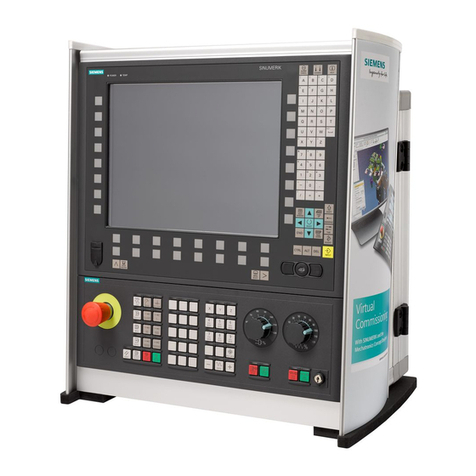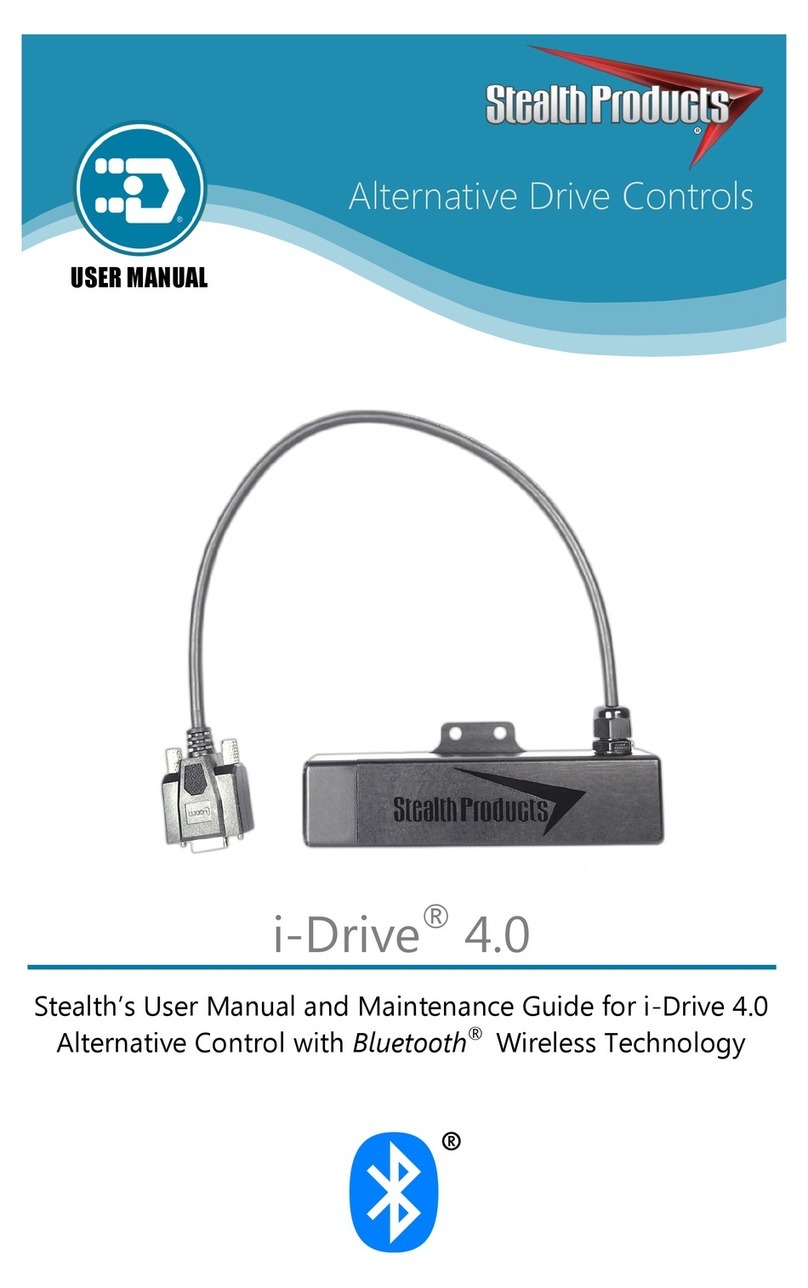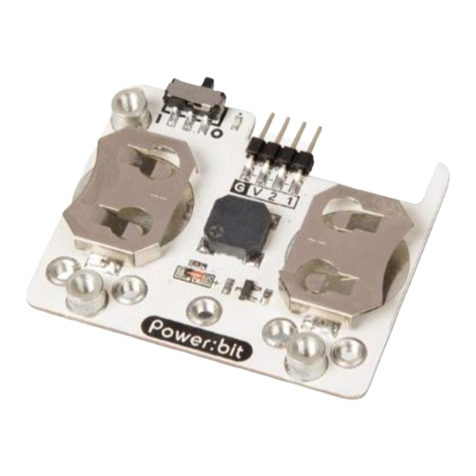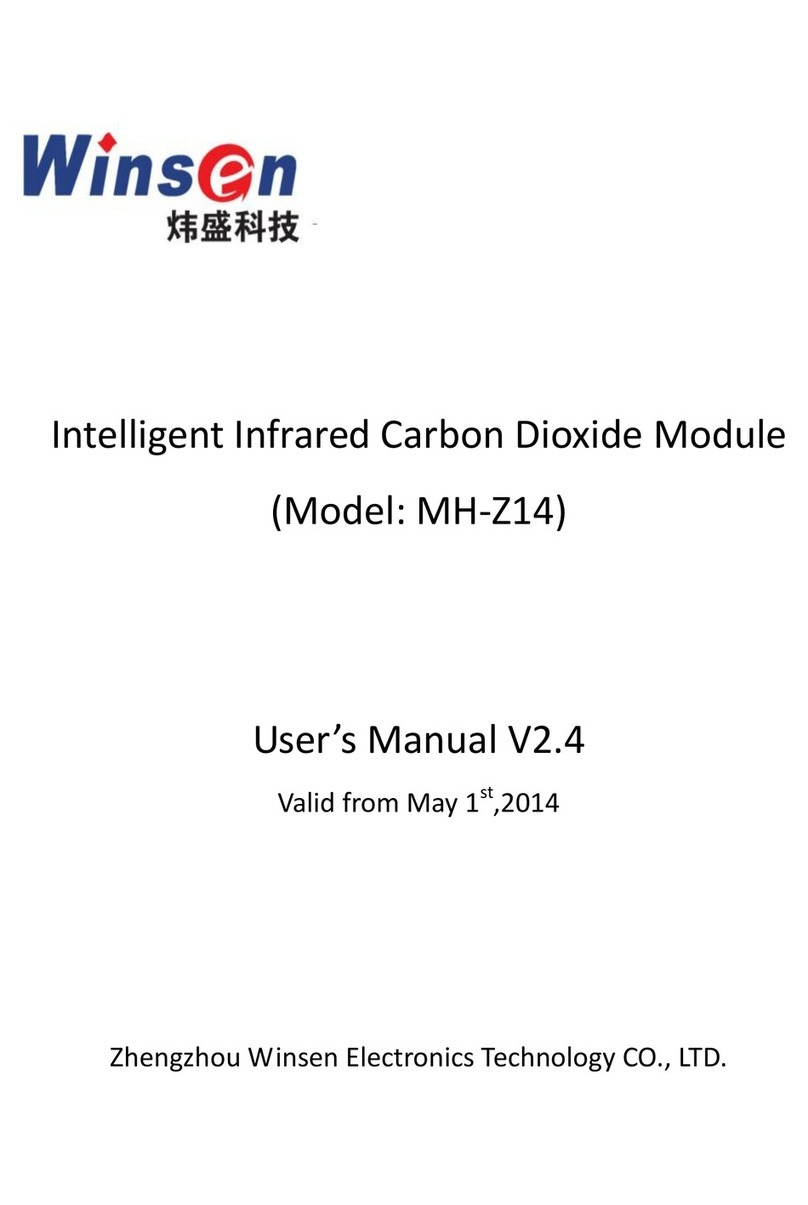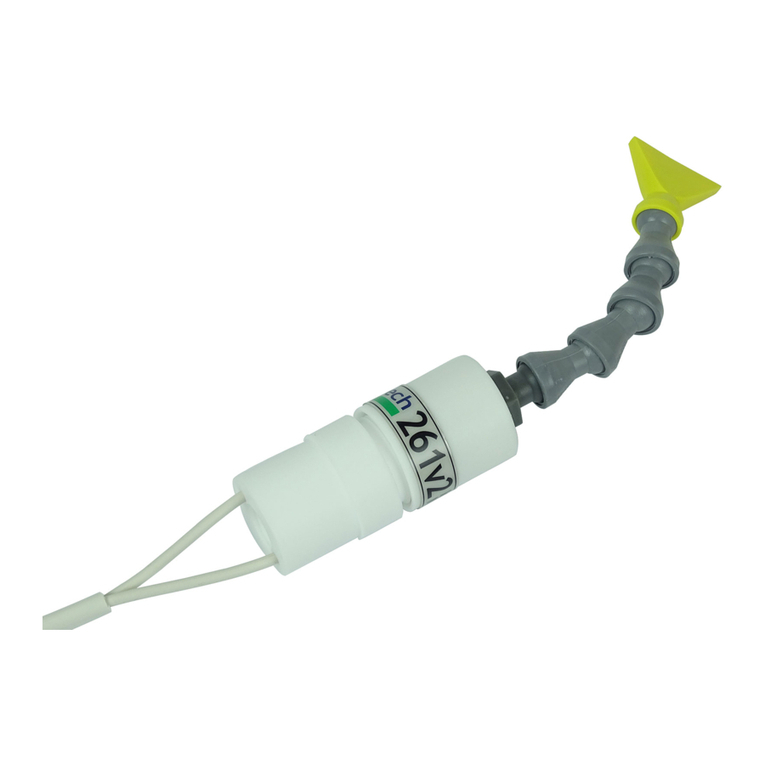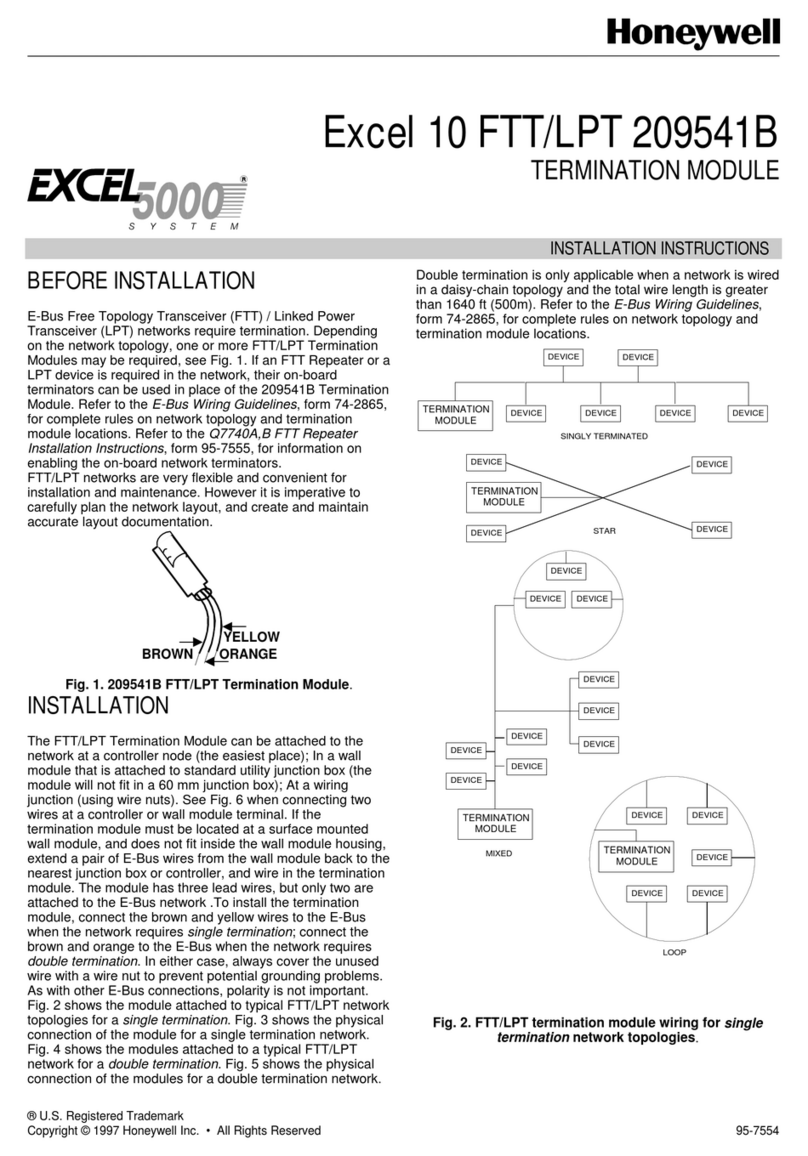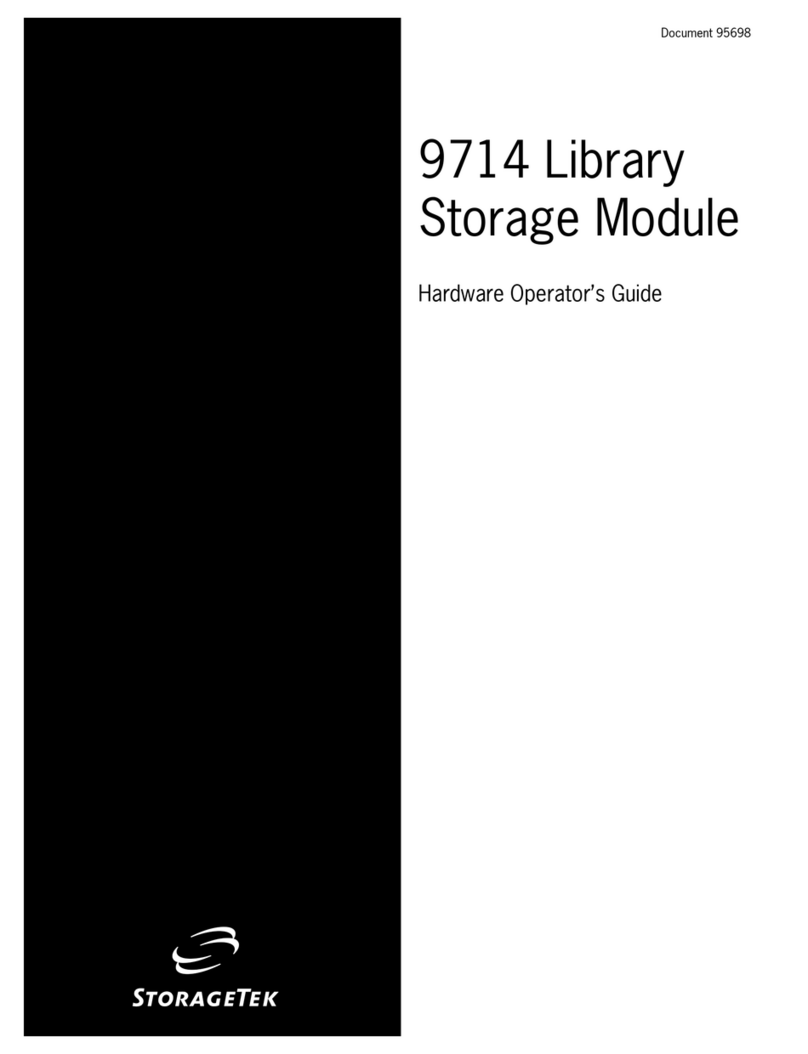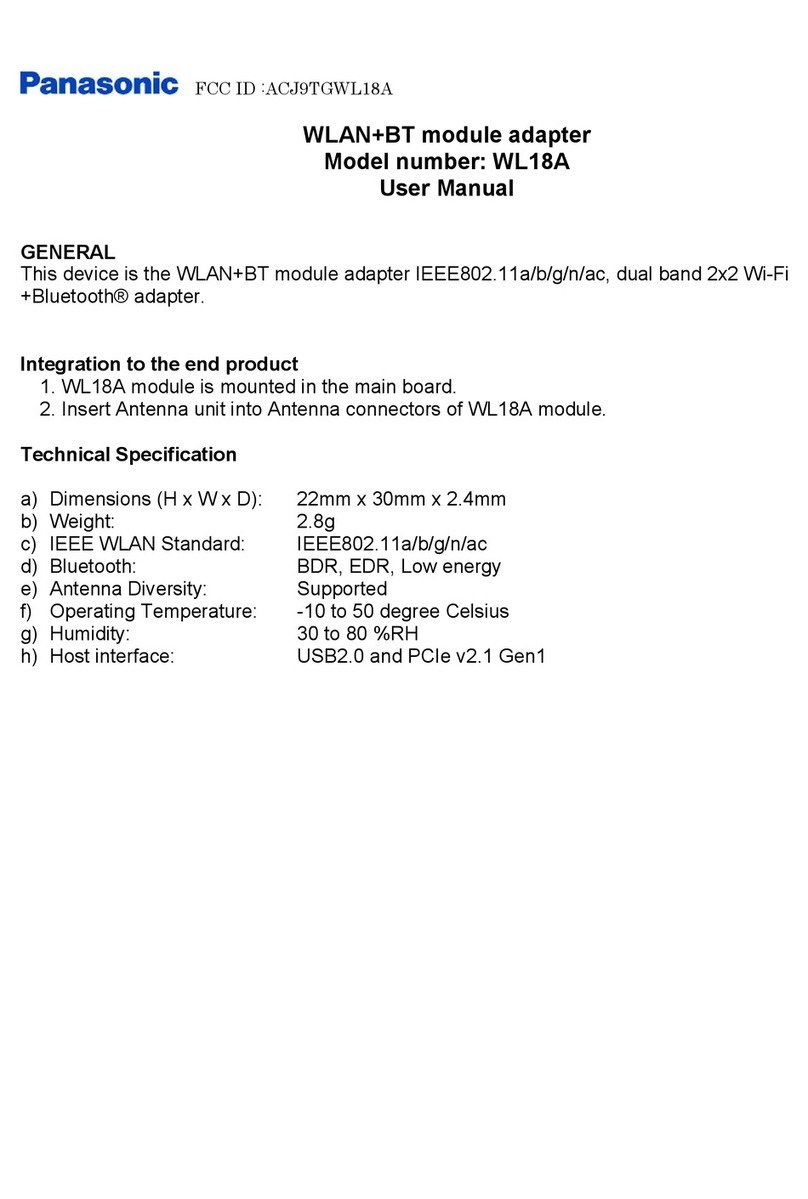Pressroom Electronics PressCam 8 User manual

PressCam 8
Installation & Operations Manual

Rev. 5.0

Machinery Guards and Controls
P.O. Box 99875, Pittsburgh, Pennsylvania 15233
800-937-4334 412-262-1115 FAX: 412-262-1197
Punch Press Controls (Resolver or Rotary Cam Based)
Punch Press Automation Controllers
Time-Based Brake Monitors
Mute-out Packages
Components & Accessories
Brake Performance Tester
PressCam 8-“Control Reliable” Punch Press Automation
Controller
for
info
Fax your request to 412-262-1197
Name: _____________________________________________________
Title: _____________________________________________________
Company: _____________________________________________________
Address: _____________________________________________________
_____________________________________________________
City, State, Zip: _____________________________________________________
Phone: ____________________ Fax: ____________________
Email: _____________________________________________________
Please send me information on the above marked items

Proper Usage and Warnings
The information disclosed herein includes proprietary
rights of the manufacturer. Neither this document nor
the information disclosed herein shall be reproduced
or transferred to other documents, used or disclosed
to others for manufacturing purposes, or for any other
purposes, except as specifically authorized in writing by
the manufacturer. If this manual is supplied in connection
with the sale or delivery of manufacturer’s equipment, it is
to be used solely for maintenance, repair or installation of
such equipment.
You MUST read and fully understand the following
information pertaining to the proper use and limitations of
your PressCam 8:
• The PressCam 8 MUST be installed by qualified
personnel only.
• The PressCam 8 MUST NOT be used on full
revolution presses or any machine that cannot be
commanded to stop at any time.
• The press on which the PressCam 8 is installed
MUST meet OSHA 1910.217 regulations which
include inspection and maintenance procedures that
MUST be followed to meet these regulations. And
is highly recommended that the press meet current
ANSI B11.1-1988 standards. The manufacturer
WILL NOT take responsibility for improperly
maintained machinery.
• The PressCam 8 MUST be checked out before
put into use, follow this manual for the proper
procedures.
• The PressCam 8 SHALL NOT be modified or
repaired except by qualified personnel and/or upon
authorization of the manufacturer. Never operate
machinery that is not in full working order.
• Make sure that all maintenance people, machine
operators, die-setters, foremen, and supervisors
have read and understand this manual.
• All procedures in this manual MUST be followed.
The manufacturer WILL NOT take responsibility for
operation if all procedures and warnings listed in all
manuals are not followed.
Warranty
Manufacturer warrants that this product will be free from
defects in material and workmanship for a period of two
years from the date of shipment thereof. Within the
warranty period, manufacturer will repair or replace such
products which are returned with shipping charges prepaid
and which will be disclosed as defective upon examination
by the manufacturer. This warranty will not apply to any
product which will have been subject to misuse, negligence,
accident, restriction, and use not in accordance with
manufacturer’s instructions or which will have been altered
or repaired by person’s other than the authorized agent or
employees of the manufacturer.
Disclaimer
The provisions of the paragraph “WARRANTY” are the
sole obligations of the manufacturer and exclude all other
warranties of merchantability, expressed or implied.
Further, there are not warranties which extend beyond the
above warranty.
Limitation of Liability
In the event of any claim for breach of any obligations
of manufacturer under any order, whether expressed
or implied, and particularly in the event of any claim of
a breach of the warranty or warranties contained in the
paragraph “WARRANTY” or of any other warranties,
expressed or implied which might despite the paragraph
entitled “DISCLAIMER,” be determined to be incorporated
in any order, the company shall under no circumstances
be liable for any consequential or special damages, either
in law or in equity, or for losses or expenses or claims for
the same arising from the use of, or inability to use, the
products of the manufacturer for any purpose whatsoever.
This equipment has been designed to the very highest
performance and safety standards known to the current
technological state of the art. However, the installation,
usage, suitability, and fitness of our equipment for any
purpose, known or unknown, is interdependent upon
the performance of other equipment not manufactured,
installed, or secured or maintained by the manufacturer.
We WILL NOT and DO NOT accept responsibility for any
overall system performance when factors, such as these,
are beyond our control.
WARNING: The entire machine safety system must
be tested at the start of every shift. Machine testing
should include: (1) proper machine operation and
stopping capability; and (2) verification of proper
installation and settings of all point of operation
guards and devices before the operation is released
for production.
FILL THIS INFORMATION OUT IMMEDIATELY
PURCHASE DATE: ______________________
PURCHASED FROM: ____________________
MODEL NO.: ___________________________
SERIAL NO.: ___________________________
OPTIONS: _____________________________
SOFTWARE REVISION NO.: ______________
This information will be needed in the event
you need assistance

PressCam 8
Installation and Operation Manual
Pressroom Electronics, Inc.
3715 Swenson Avenue
St. Charles, IL 60174
P/N: 28-019r5.0
Customer Service: 630-443-9320 (CST)
(Please have Model #, Serial #, and Software Rev # Available)
Sales and Marketing: 800-937-4334 (EST)

Introduction
System Overview................................................................................................................................................ 1
Specifications ..................................................................................................................................................... 1
System Installation
Resolver Mounting.............................................................................................................................................. 3
Controller Mounting ............................................................................................................................................ 3
Internal System Wiring ....................................................................................................................................... 3
External Wiring Installation................................................................................................................................. 4
Dimensional & Wiring Drawings
• Resolver Dimensions & Wiring (#28-100) ..................................................................................................... 5
• Internal Wiring Diagram (#28-101) ................................................................................................................ 6
• Control Box Dimensions (#28-102) ............................................................................................................... 7
• Panel Cut-Out Dimensions (#28-103) ........................................................................................................... 8
• Control Panel Dimensions (#28-104) ............................................................................................................ 9
• External Wiring Diagram (#28-105) ............................................................................................................. 10
• I/O Board Dimensions (#28-106)..................................................................................................................11
• Control Board Terminal Chart (#28-107)...................................................................................................... 12
• I/O Board Terminal Chart (#28-108) ............................................................................................................ 12
Function Descriptions
Operator Interface ............................................................................................................................................ 13
Adjust Contrast ................................................................................................................................................ 14
Job Selection .................................................................................................................................................... 14
Job Number ................................................................................................................................................. 14
Job Name .................................................................................................................................................... 14
Limit Switch/Die Sensor Names .................................................................................................................. 14
Reset Die Faults (RUN Mode Only) ................................................................................................................. 14
Reset All Faults (PROG Mode Only) ................................................................................................................ 14
Minimum Speed................................................................................................................................................ 14
Maximum Speed............................................................................................................................................... 14
Running Time ................................................................................................................................................... 14
Counters........................................................................................................................................................... 15
Die Sensor Setup ............................................................................................................................................. 15
How to Program a Die Input ........................................................................................................................ 16
How to Turn Off a Die Input ......................................................................................................................... 16
Die Fault TS Type ........................................................................................................................................ 16
Automatic Safety Distance ............................................................................................................................... 17
Time-Based Brake Monitor............................................................................................................................... 17
ANSI Standard B11.19-1990 E5.6............................................................................................................... 18
Determing the WARN and FAIL Set Points .................................................................................................. 18
Input Signal.................................................................................................................................................. 18
Altering and WARN and FAIL Set Points..................................................................................................... 19
Motion Detection.......................................................................................................................................... 19
Drift Detection.............................................................................................................................................. 19
90° Stop Test ............................................................................................................................................... 19
Servo Setup...................................................................................................................................................... 19
Limit Switch Setup............................................................................................................................................ 20
Table of Contents

Table of Contents
Speed Compensation ....................................................................................................................................... 20
Press Utility....................................................................................................................................................... 21
Set Password (SETPAS) ............................................................................................................................. 21
Clear JOB (CLRJOB) .................................................................................................................................. 21
Clear DATA (CLRDTA)................................................................................................................................. 21
Clear ALL memory (CLRALL) ...................................................................................................................... 21
Top Dead Center (SETTDC)............................................................................................................................. 21
Remote Status (REMOTE) .......................................................................................................................... 21
Language Selection (English/Spanish/French) ........................................................................................... 21
Tonnage capacity (TONCAP) ...................................................................................................................... 22
PCLink (off-line Job Programmer) (PCLINK)............................................................................................... 22
Depth Penetration Factor ............................................................................................................................ 22
Tonnage Setup ................................................................................................................................................. 22
Installation Between the TLM & PC8........................................................................................................... 22
Setup and Calibration .................................................................................................................................. 23
Operation..................................................................................................................................................... 23
Remote Status.................................................................................................................................................. 24
PressCam8 J8: RS-232 Remote Status Commands...................................................................................24
System Setup & Faults
System Setup Procedure.................................................................................................................................. 25
Fault Codes ...................................................................................................................................................... 25
Regulations & Guidelines for Safe Operation
OSHA Regulations............................................................................................................................................ 28
ANSI Standard B11.19-1990 ............................................................................................................................ 29
Safety Guidelines for Management .................................................................................................................. 30
OPTIONAL Tonnage Load Monitor (TLM)
TLM Mounting & Connecting
Overview........................................................................................................................................................... 32
Mounting the TLM............................................................................................................................................. 32
Connecting Sensors to the TLM Sensor Connection Guidelines .....................................................................32
Connecting Sensors to the TLM....................................................................................................................... 33
TLM Cam Switch Wiring Connections.............................................................................................................. 34
T400 Installation ............................................................................................................................................... 36
TLM Installation
Using the T400 Sensor Installation Fixture Kit No. 1977-749........................................................................... 38
Using the T400 Sensor Installation Fixture Kit No. 1977.................................................................................. 39
Wiring a Triggering Device Into the TLM .......................................................................................................... 40
The Analog Output Connector .......................................................................................................................... 40
TLM Calibration
Tonnage Setup ................................................................................................................................................. 41
Calibrating the TLM Load Module .................................................................................................................... 41
Setup the TLM with Pre-calibrated Load Cells ................................................................................................. 42
TLM Operation
Operating the TLM ........................................................................................................................................... 43
TLM Term Definitions ...................................................................................................................................... 44

PressCam 8 (all styles, Front panel & Stand alone)
Ordering Procedure
1. Specify Mounting Style
F......... Front Panel Mounting to be installed in an existing control panel.
C......... Stand alone NEMA12 enclosure
T.......... Stand alone NEMA12 enclosure with room for the Tonnage Module
2. Specify Output Relays (13)
M ......... Mechanical Dry contact relays SPDT 10A@250VAC
A ......... AC Solid State - single Pole N.O. 3A@140VAC, 12-140VAC, 25-70Hz
D .......... DC Solid State - single Pole N.O. 3A@60VDC, 12-60VDC
3. Specify Controller input power
1.......... 24VDC
2.......... 120VAC 50-60Hz
3........... 240VAC 50-60Hz
4. Resolver Connector Cabling
30’(9m) of cable with connectors is supplied standard. If additonal length is needed, specify in
feet, 150’ (46m) maximum.
5. Specify Tonnage Monitoring (optional)
T1 ......... One Channel monitoring with strain sensor and cable
T2 ......... Two Channel monitoring with strain sensor and cable
T3 ......... Three Channel monitoring with strain sensor and cable
T4 ......... Four Channel monitoring with strain sensor and cable
Example Part #
PC8 -C- 2- M- 30’ - T4
Style Power Relays Resolver Tonnage
Tonnage Monitoring (optional)
T1 One channel monitor module with strain sensor and cable
T2 Two channel monitor module with strain sensor and cable
T3 Three channel monitor module with strain sensor and cable
T4 Four channel monitor module with strain sensor and cable

1
System Overview
The PressCam 8 is a resolver-based press automation
controller that incorporates a programmable cam limit
switch, timed brake monitor, four counters, die protection
system, and (optional) tonnage monitor in one complete
package. The unit contains two 16-bit computers that
are configured to cross check each other as well as
the resolver and cable every cycle of code. All faults
generate descriptive error messages and special
watchdogs shut down the system should either computer
become erratic. The software can be upgraded in the
field using a PC computer with a standard serial port.
Features
• Up to seven Limit Switch outputs can be set to
cycle (non-timed) up to three times per crank
rotation by setting an open / close crank angle.
• The last four outputs can be set for timed, non-
timed, delayed and hold or cycled two times per
crank revolution.
• The five additional outputs are used to indicate
when the batch counter is reached, sensor faults,
general faults, and motion detection.
• The first thirteen outputs can be either solid-state
(AC or DC) or relay logic. The last three are force-
guided (Form B Safety) relays between the begin/
end crank angles. A missed transition outside the
declared window will generate a die sensor fault.
• Brake and die sensor inputs are optically coupled
and can be either AC or DC (sourcing or sinking).
• Up to 75 Jobs can be saved using nonvolatile
memory chips. These memory chips are
removable for ease of transfer. Each job number
stores a name and/or number up to 13 characters
for easy identification.
• Built-in Brake Monitor will issue a warning when
the programmed warning time is exceeded and
will issue a failure signal when programmed stop
time is exceeded.
• True Motion Detection system that checks for Lack
of Motion (Motion Fault) and Unintended Motion
(Drift Fault).
• SPM Indicator (Strokes per Minute).
• Crank angle shown graphically and in large
numbers.
• Speed compensation of user selected outputs.
• Servo feed setup.
• Stroke, Batch, Quality, and Part Counters to keep
track of operation.
• Digital contrast adjustment of LCD screen.
• Password and/or Supervisory Controlled Selector
Switch to prevent altering of parameters, except
counters and LCD contrast.
• Four-channel tonnage monitoring.
• PCLink to allow offline job storage and creation.
Specifications
Input Power
3 VOLTAGE RANGES:
24 VDC (optional)
120 VAC (standard)
240 VAC (optional, jumper selectable)
All AC voltages work with 50 or 60 Hz
24 watts with all relays
Fuses
I/O board
F1 to F16 LS Outputs 5A Fast Blow (20-023)
F17 Power 1A Slow Blow (20-022)
F18 to F33 DIE Inputs 5A Fast Blow (20-023)
F35 12VDC 5A Fast Blow(20-023)
Computer
F1 Power 5A Fast Blow (20-023)
Indicator
Computer Monochrome LCD display 640 x 480
(8” Diagonal)
-LCD BIAS (GRN) D16
Vpp (YELL) D2
-5v (GRN) D10
I/O Board +12Vdc (RED) D35
17 Optically Coupled inputs (Die’s
are YEL & 12VDC, Brake is RED &
120VAC)
13 Solid-State or mechanical relay
outputs (Form C output). Customer
must specify which type of output
(i.e., AC or DC, Voltage Range, Solid
State or Relay 5A SPDT) (GRN)
3 Force guided/monitored relay
outputs (N.O. output 8A) (GRN)
D52 = RED (power down indicator)
D53 = RED (AUX)
Introduction

2
Set Points
STROKE COUNT: 0 to 999,999 strokes
BATCH COUNT: 0 to 999,999 strokes
QUALITY COUNT: 0 to 999,999 parts
PART COUNT: 0 to 4 parts/stroke
0 to 999,999 parts total
BATCH SIZE: 0 to 999,999 strokes
Limit switch angle: 0 to 359 degrees
Limit switch timer: 0 to 9999 milliseconds
Die sensor angle: 0 to 359 degrees
Speed Compensation: 0 to 99 degrees
MIN SPEED: 0 to 999 SPM
MAX SPEED: 0 to 999 SPM
Brake WARNING: 1 to 999 milliseconds
Brake FAILURE: 1 to 999 milliseconds
Brake ACTUAL: 1 to 999 milliseconds
(+/-1 millisecond
accuracy)
MOTION: 0 to 5.9 seconds (1/10-
sec increments)
DRIFT: preset to 2 SPM (1/10 SPM
increments)
Crank Angle: 0 to 359 degrees (1°
increments)
SPM: 0 to 999 strokes/minute
(+/- 1 SPM
accuracy)
Resolver
+/- 1º Resolution up to 600 RPM (+/- 2º
Resolution from 601 to 1000 RPM)
Shaft loading: Radial 400 lbs., Axial 200 lbs.
Standard cable 30’ (maximum length of 600’)
Construction
Stand Alone Unit
All 18 Gauge painted steel NEMA 12
lockable box with sealed front panel (see
dimensional information in System Installation
section).
Panel Mount Unit
All 18 Gauge painted steel NEMA 12
lockable box with sealed front panel (see
dimensional information in System Installation
section).
Temp. Range
0 to 50ºC
Dimensions
See “System Installation” section.
Introduction

3
WARNING: The entire machine safety system must
be tested at the start of every shift. Machine testing
should include: (1) proper machine operation and
stopping capability; and (2) verification of proper
installation and settings of all point of operation
guards and devices before the operation is released
for production.
Important Notes
• When using step down or isolation transformers
make sure to ground one side to prevent the
Neutral from floating above ground and
causing the surge suppressors (MOV’s) to
short out.
• The resolver cable must be kept away from
high current and/or high voltage lines, or run
in its own conduit to prevent excessive noise
from causing nuisance faults to occur.
• All remotely wired switches, buttons, etc. must
use shielded cable and be kept away from
high current and/or high voltage to prevent
nuisance faults.
• If you use the +12VDC source on the I/O
board for die inputs, do not bring a wire from
the “GND” terminal out to your machine.
Simply connect the “GND” to the earth ground
and use the machine itself as the ground.
Resolver Mounting
The resolver may be driven directly through a Lovejoy
coupler, gear and chain, or timing belt.
If a chain or belt is used, it must be set for a 1:1 ratio.
CW or CCW rotation can be setup by changing the
lead configuration. Bring the press up to top dead
center and set the new top dead center (see “Speed
Compensation” in Function Description section of this
manual for instructions).
Refer to Drawing #28-100 for Resolver Dimensions &
Wiring as well as Drawing #28-101 for Internal Wiring
at the end of this section.
Controller Mounting
Control Box Mount. If you purchased a PressCam 8 in
its own enclosure, then the I/O board is already mounted
inside the box so it is only necessary to find a location
with good access and clearance to prevent the LCD from
being damaged from the door hitting nearby objects. If
the location has vibration, you must shock mount the
box to prevent damage.
System Installation
Four mounting holes are all that is necessary to mount
the box (see Drawing #28-102 for dimensional layout
and Drawing #28-101 for wiring diagram in this section).
Panel Mount. If you purchased a PressCam 8 without
its own enclosure then you must find a location on
your control cabinet that will allow you to mount the I/O
board as close as possible to the PressCam 8 controller.
There is a 40 pin ribbon cable that connects both boards
together and must remain as short as possible to prevent
nuisance faults due to electrical noise getting into the
system through this cable. If the controller is to be on a
door, make sure that when the door is opened nothing
will come into contact with the LCD. Mounting the unit
closer to the hinge is probably a good idea. Cut out
a hole in your control cabinet and drill eight mounting
holes. Insert the PressCam 8 into the hole and install
the eight #6 keps nuts. Refer to Drawing #28-103 for
Panel Cut-Out Dimensions, Drawing #28-104 for Control
Panel Dimensions, and Drawing #28-101 for Internal
Wiring on the following pages.
I/O Board Mounting. If you are installing a panel mount
unit, then mount the I/O board as close as possible to
the panel mount controller. Dress the 40 pin ribbon
cable between the controller and the I/O board to find
out how long the cable needs to be. Cut the excess
cable and crimp on the 40 pin connector making sure
the arrow on the connector points to the red lead of
the cable (just like the other end of the cable). Use an
arbor press, or similar, to squeeze both halves of the
connector around the cable. Be sure to keep the cable
straight while crimping, otherwise, the cable contacts
will be shorted. Refer to Drawing #28-104 for Control
Panel Dimensions and Drawing #28-101 for Internal
Wiring on the following pages.
Internal System Wiring
1. Assemble 40 pin cable and install between
control unit (P1) and I/O board (P1). Be sure
to watch for pin1.
2. Install resolver cable between resolver and
control unit (J11).
3. Install five wire power cable and install between
I/O board (J9) and control board (J1).
4. Install tuning knob cable on J2 (left side) on
control board.
5. Install RUN/PROG key switch cable on J5 (right
side) on control board.
6. Install LCD cable to J14 on control board.
7. Install LCD inverter cable to J3 on control board.
See Drawing #28-101 for wiring diagram in this section.

4
External Wiring Installation
Power
Power for the entire PressCam 8 system is brought in
through connector J7 on the I/O board.
Power for the control board J1 comes from J9 on the
I/O board.
See Drawing #28-105 for the External Wiring Diagram
in this section.
Die Inputs
• All inputs used are optically coupled and can be
either 12 to 24VDC or 120VAC (optional). The
voltage type must be selected before hand.
• Standard setup: all inputs are setup for 12 to
24VDC except for the brake/clutch input which is
setup for 120VAC.
• Terminals 17 & 18 are dedicated for the brake/
clutch signal.
• Terminals 1 to 12 are Die Sensor Inputs and use
the terminal just to the right of 12 as their common.
• Terminals 13 to 16 are Die Sensor Inputs and use
the terminal just to the left of 13 as their common.
• Tie the common terminals to the +12VDC terminal
of J6 for systems with sensors that go to ground
when closed.
Example: Connect the output from all die sensors to
terminals #1 to #12, then connect +12VDC from J6 on
the I/O board to the COM terminal (just below terminal
#12 on the I/O board).
See Drawing #28-105 for External Wiring Diagram in
this section.
LS Outputs (1-11)
• There is space for eleven limit switch outputs and
one counter output, and four fault outputs.
• The first thirteen outputs use either a solid-state
or mechanical relay modules. The solid-state
modules are selected for either AC or DC and for
the proper voltage/current range.
• Determine the output logic you need for your press
control (i.e., Sinking, Sourcing, AC).
• For solid state outputs, the “NO” terminals are
the + positive side, and the “C” terminals are the
-ground side. For relays, all terminals are DRY
contacts and the terminal labels are correct.
• For Sinking DC systems, you must ground the
“C” terminals and your output is provided at the
“N.O.” terminal. When the output LED is on, the
“N.O.” terminal will pull down to ground.
• For Sourcing DC system, you must place a DC
voltage on the “N.O.” terminal (the voltage level
must be within the range written on the module)
and your output is provided at the “C” terminal.
When the output LED is on, the “C” terminal will
provide voltage. This is the fastest and simplest
method of wiring.
• For an AC system using solid state outputs, you
must apply line voltage to either terminal “N.O.”
or “C” and take the output for the other terminal.
• For relay systems, all terminals are DRY and
provide you with simple N.O. and/or N.C.
switches. You can place any voltage and current
(up to 1/2 the relay rating) on the terminals.
See Drawing #28-105 for External Wiring methods in
this section.
Outputs (12-16)
The speed, die fault, and general fault outputs should
be placed in stop circuits of the machine. The counter
output #12 should be placed in an alarm or top stop
input of the machine control.
See Drawing #28-105 for External Wiring and Drawing
#28-106 for Terminal Chart in this section.
System Installation

5
System Installation
Resolver Dimensions & Wiring (#28-100R3)
Dimensions in inches
For millimeters multiply by 2.54
Note: Rev3 diameter shaft is from 9/2015 forward. Rev2 is up to 9/2015.

6
Internal Wiring Diagram (#28-101)
System Installation

7
Control Box Dimensions (#28-102)
System Installation

8
Panel Cut-Out Dimensions (#28-103)
System Installation

9
Control Panel Dimensions (#28-104)
System Installation

10
System Installation
External Wiring Diagram (#28-105)

11
System Installation
I/O Board Dimensions (#28-106)

12
System Installation
ContrContr
ContrContr
Control Boarol Boar
ol Boarol Boar
ol Boardd
dd
d TT
TT
Terer
erer
erminal Charminal Char
minal Charminal Char
minal Chart (#28-107)t (#28-107)
t (#28-107)t (#28-107)
t (#28-107)
I/O BoarI/O Boar
I/O BoarI/O Boar
I/O Boardd
dd
d TT
TT
Terer
erer
erminal Charminal Char
minal Charminal Char
minal Chart (#28-108)t (#28-108)
t (#28-108)t (#28-108)
t (#28-108)
Resolver J11 Connection to resolver See Resolver #28-100 for details
RS-232 J8 Standard serial port interface Standard DB-9 female port
RS-485 J12 Optional interface Half duplex
LCD J14 Connection to LCD
LCD invertor J3 Connection to LCD backlight
KNOB J2 Connection to encoder KNOB
and pushbutton
KEY J6 Connection to key switch Pin 1 = ground
Pin 2 = key input
Pin 3&4 = optional inputs
Power Input J1 +24vdc unregulated input Pin 1&2 = +24vdc
Pin 4&5 = ground
I/O connection P1 I/O connection to I/O board
Software update J4 Jumpers allow in field software Consult factory on procedure.
mode upgrades
Output #1-11(form C) J1-J3 Limit Switch 1 -11 Up to 3 output windows based on crank
angle. LS 8-11 can be timer based if
desired.
Output #12(form C) J3 Counter Opens when Batch counter incremented,
or Quality Count reached.
Output #13(form C) J10 Die Fault Remains closed in PROG mode. Opens in
RUN mode when Die fault occurs.
Output #14(N.O.) J12 Speed Closes when press speed falls with the
Min and Max speed setpoints.
Output #15 & #16(N.O.) J14-J16 General Faults Opens when any fault occurs, except
when a Die fault occurs in PROG mode.
Inputs #1-12 J13 Die Sensor signals Signal sent back from sensors using a
(with their own common term.) (Input #7 is simple contact closer. One side of sensor
(12Vdc standard) parts counter) is grounded, the other side is the signal.
Inputs #13-16 J11 Die Sensor signals
(with their own common term.)
(12Vdc standard)
Input #17 (120Vac standard) J15 Brake/Clutch signalParallel signal sent by the press control
going to the valves.Voltage = press
movement.
+24Vdc unregulated J9 Power Out to Pin 1&2 = +24vdc
Control board Pin 4&5 = ground
+12Vdc regulated J6 Output for Die Connect the + to the Die Sensor common
Sensors only terminals and the - to the grounded side of
the Die Sensors.
Power Input (120Vac standard) J7 Power input for Supply Line, Neutral, Ground
entire system
I/O connection P1 I/O connection to
control board
Table of contents
Popular Control Unit manuals by other brands
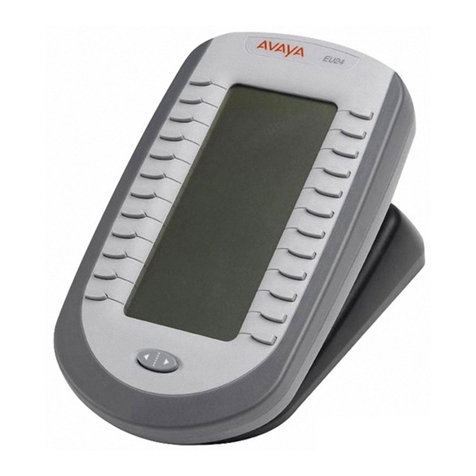
Avaya
Avaya IP OFFICE EU24 user guide
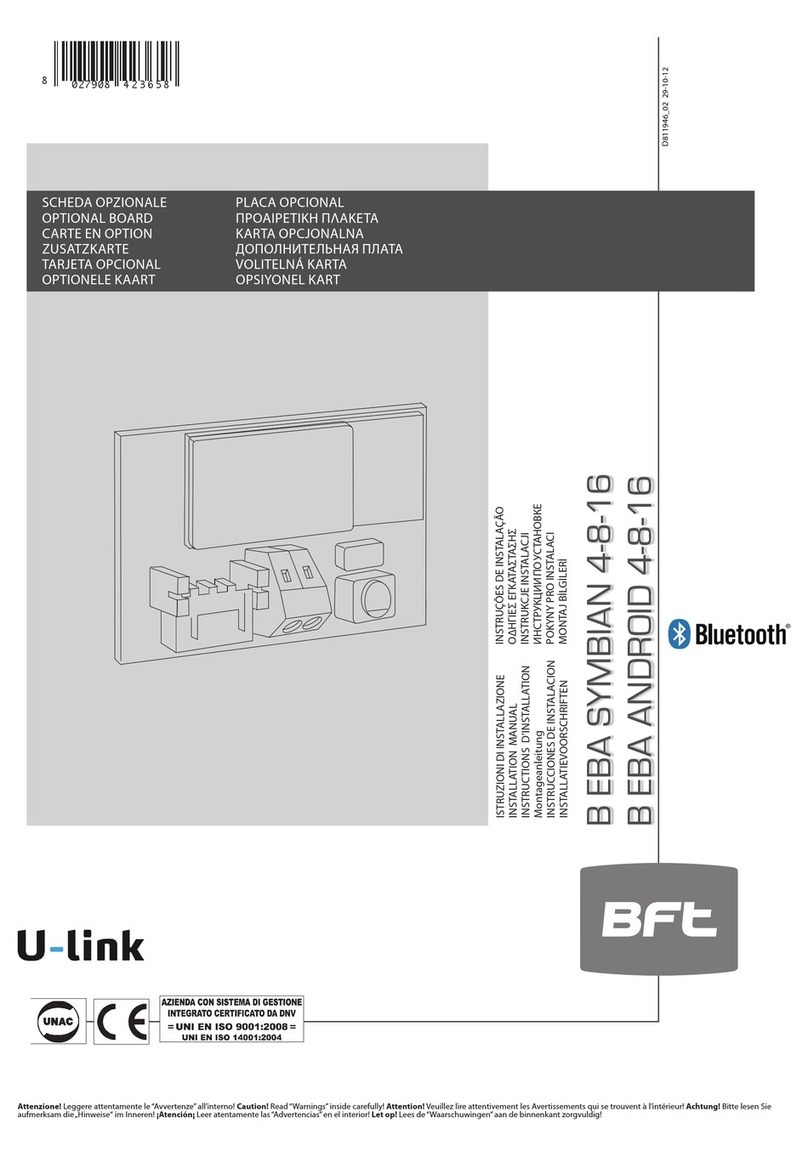
BFT
BFT B EBA SYMBIAN 4-8-16 installation manual
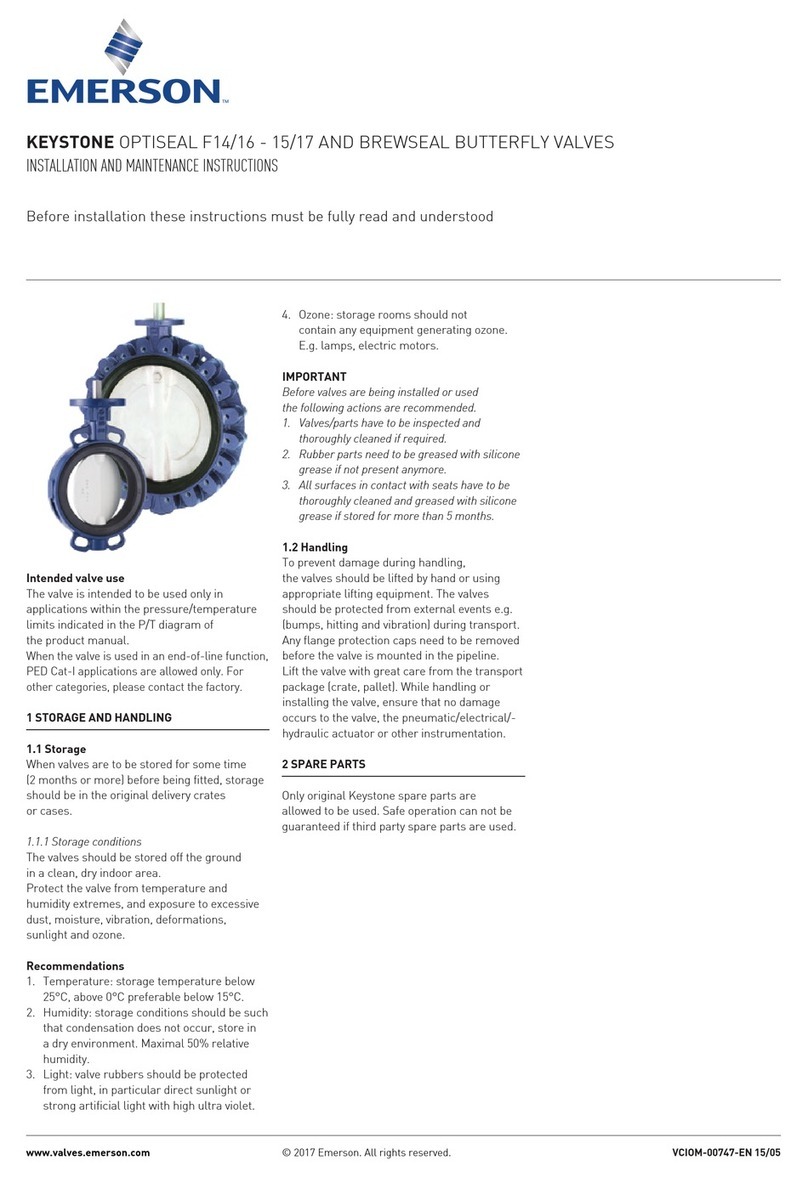
Emerson
Emerson KEYSTONE OPTISEAL F16 Installation and maintenance instructions
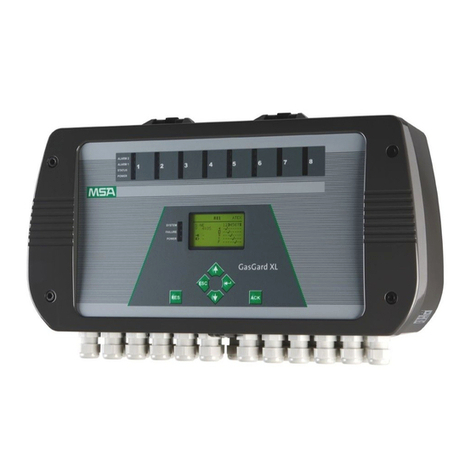
MSA
MSA GasGard XL operating manual
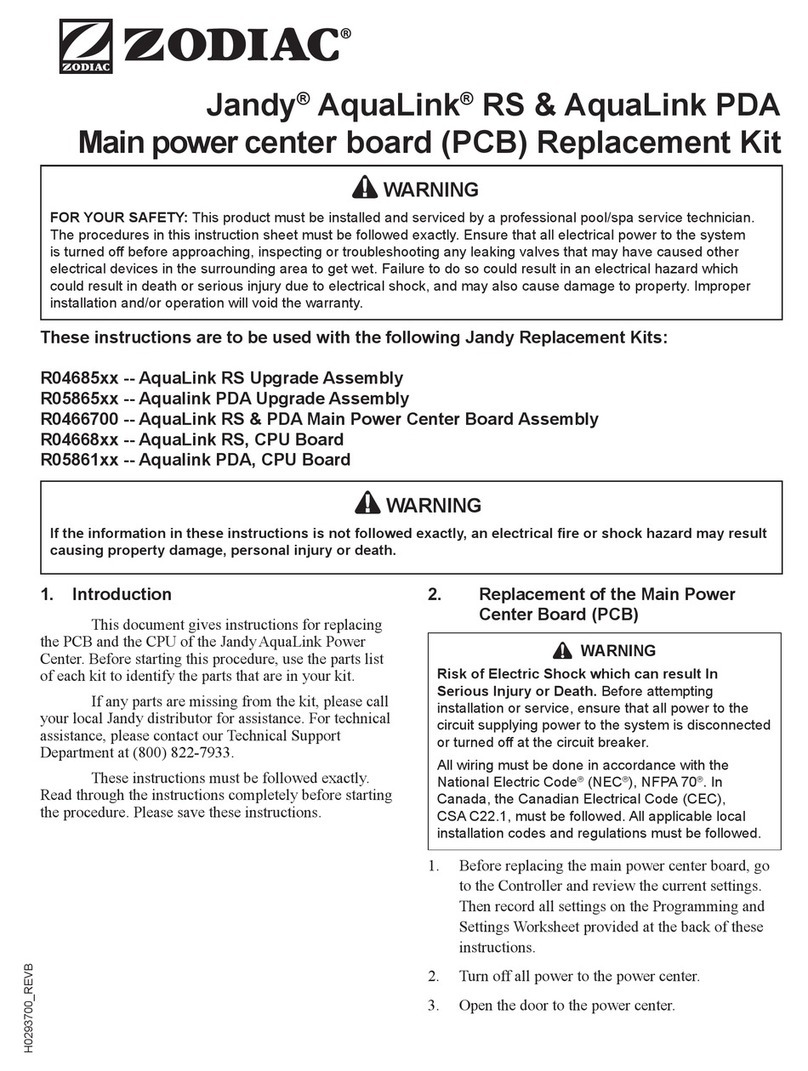
Zodiac
Zodiac Jandy AquaLink RS R04685 Series instructions

Texas Instruments
Texas Instruments TPS71533EVM user guide
